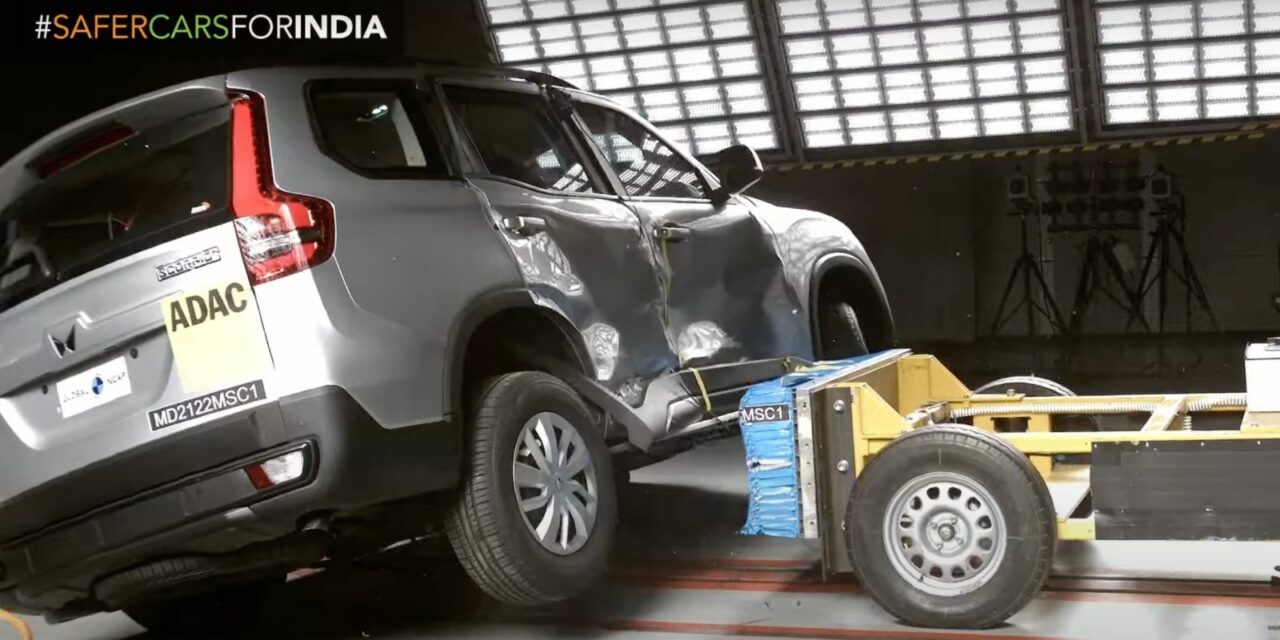
Mahindra Scorpio N has scored five stars for adult occupant protection and three stars for child occupant protection under the updated GNCAP protocols
As expected, Mahindra & Mahindra’s recently launched Scorpio N has secured five stars in the latest round of Global NCAP crash tests under the #SaferCarsForIndia campaign, supported by the FIA Foundation and Bloomberg Philanthropies. The new generation Scorpio has gained five stars for adult occupant protection and three stars for child occupant protection.
The test prototype was in its basic specification as it had two airbags and anti-lock brakes. Global NCAP has noted that the absence of three-point seatbelts has affected the child occupant protection result. While the ESC (Electronic Stability Control) and side curtain airbags are not standard fitments, curtain airbags are offered as standard in most of the produced units.
The tests were conducted based on the updated Global NCAP protocols for frontal and side-impact protection, Electronic Stability Control (ESC), pedestrian protection and side-impact pole protection to score the maximum ratings. David Ward, Executive President of the Towards Zero Foundation said:
“Indian manufacturers such as Mahindra have clearly demonstrated their ongoing commitment to improving vehicle safety performance. This is very welcome and we look forward to this promising momentum being maintained when Bharat NCAP is launched next year.”
In frontal impact tests, the protection offered to the driver’s and passenger’s head and neck was good. while the chest area showed marginal protection and the knees with good protection. The driver’s tibias showed adequate protection and the passenger’s tibias showed adequate and marginal protection.
The footwell area and the bodyshell were rated as stable. In the side impact tests, the protection in the head, chest, abdomen and pelvis areas was good. In the side pole impact, curtain airbags meet the fitment requirements and the pole impact test was performed in a version with side head protection airbags, showing good protection to the head, abdomen and pelvis, and weak protection to the chest.
The ESC test meets the fitment rate requirements and the performance shown in the test was acceptable according to Global NCAP’s latest requirements. In the child occupant frontal impact protection, the child seat for the 3-year-old was installed rearward facing using the i-size anchorages and a support leg and it was able to prevent head exposure during the frontal impact offering full protection.
The child seat for the 18-month-old was installed rearward facing using the i-size anchorages and a support leg and it was able to prevent head exposure during the frontal impact offering full protection. In the side impact, both CRS’ offered full side impact protection.

